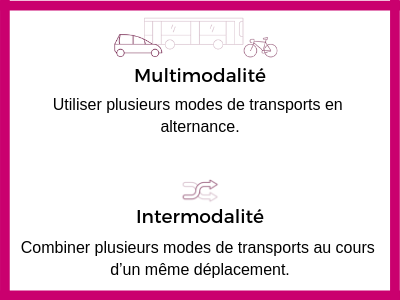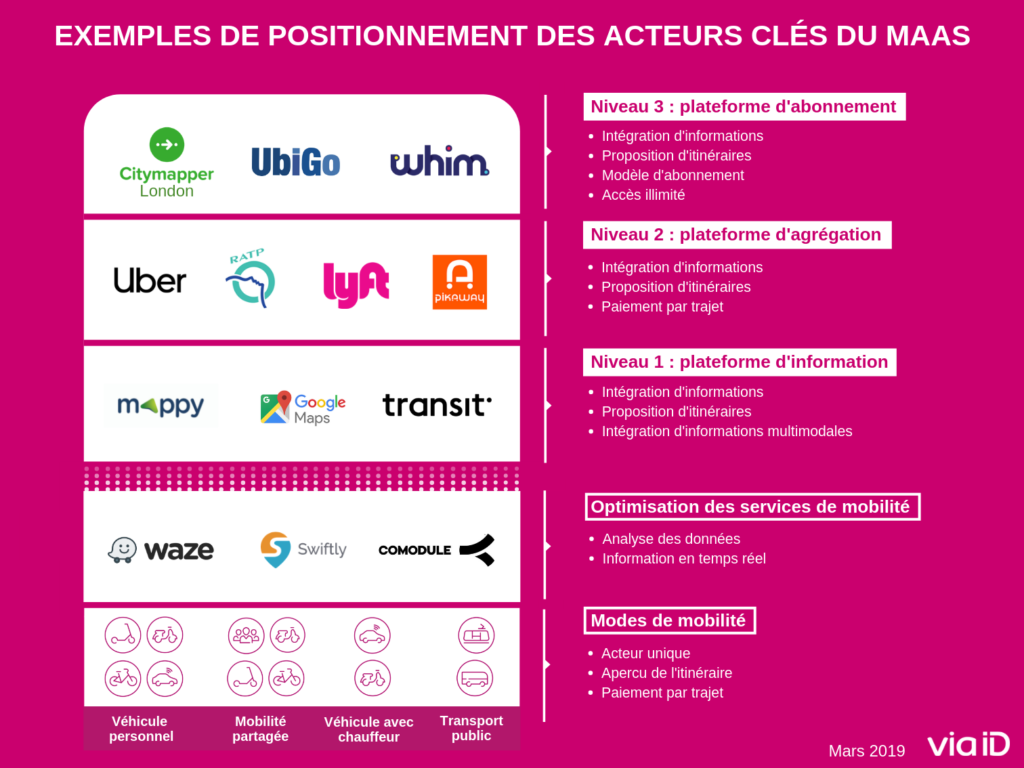
What is MaaS (Mobility as a Service)?
The arrival of many new players in the mobility sector is upsetting the balance that has existed for decades. These new offers are transforming the demands of users as well as the way they travel in cities. The diversity of mobility services can lead to greater complexity for users, who must find the best alternative for their journey and switch from one application to another depending on the operators chosen.
MaaS marks a shift in perspective from the more user-centric mobility system. It is a continuous process of aggregation with multiple layers of services and functionality. It simplifies the transition from one mode of transportation to another for a single trip, offering a smooth transition of information, reservation and payment.
MaaS is not a new concept … It is important to clarify the difference between MaaS and the existing concepts of multimodality, intermodality:

At Via ID, we define MaaS as an aggregation process including a plurality of mobility services and different levels of functionalities ranging from information, routing, payment, reservation to multimodal subscription.
MaaS is a hybrid ecosystem composed of digital elements (platforms, apps) and physical infrastructures (vehicles, roads, parking spaces, stations, etc.).
Why is everyone talking about MaaS?
For users, MaaS is a way to simplify the urban experience. Dense cities offer multiple modes of transportation (shared mobility, on-demand, self-service and traditional transportation). The arrival of new entrants in this sector means increased complexity for the user, whose dream is to access the most convenient alternatives at the touch of a finger. They will be able to choose their modes of transport according to criteria such as price, journey time, quality of service and safety.
For cities, MaaS represents an opportunity to solve congestion, pollution and parking problems. Cities see MaaS as a strategic way to optimize their operations at a reasonable cost. MaaS platforms offer the possibility to combine existing public transport systems with a growing offer of private services. The regulatory framework will have to evolve to identify a regional mobility regulator.
For traditional operators, MaaS is a strategic pivot. Public transport operators are generally specialized in a single vertical. They were not initially created to become aggregators. Regulatory changes should allow them to exploit their full potential to aggregate multiple services and change their positioning to be more user-centric.
For startups, MaaS is a great market opportunity. Startups have developed two strategies to position themselves on MaaS. One is startups like Uber, which already has a high level of traction in relation to its critical mass of users. Its position as the leading VTC company allows it to diversify its assets to offer more services and become an aggregator.
Other startups like Whim or Ubigo start from scratch and have to set up agreements with different players in order to reference their solutions on their app.
MaaS is the new paradigm of tomorrow’s cities.
Yann Marteil, CEO of Via ID
Today we identify 3 levels of MaaS aggregation from the simplest to the most complete:
Level 1 : information platform
Level 2 : aggregator platform
Level 3 : subscription platform


